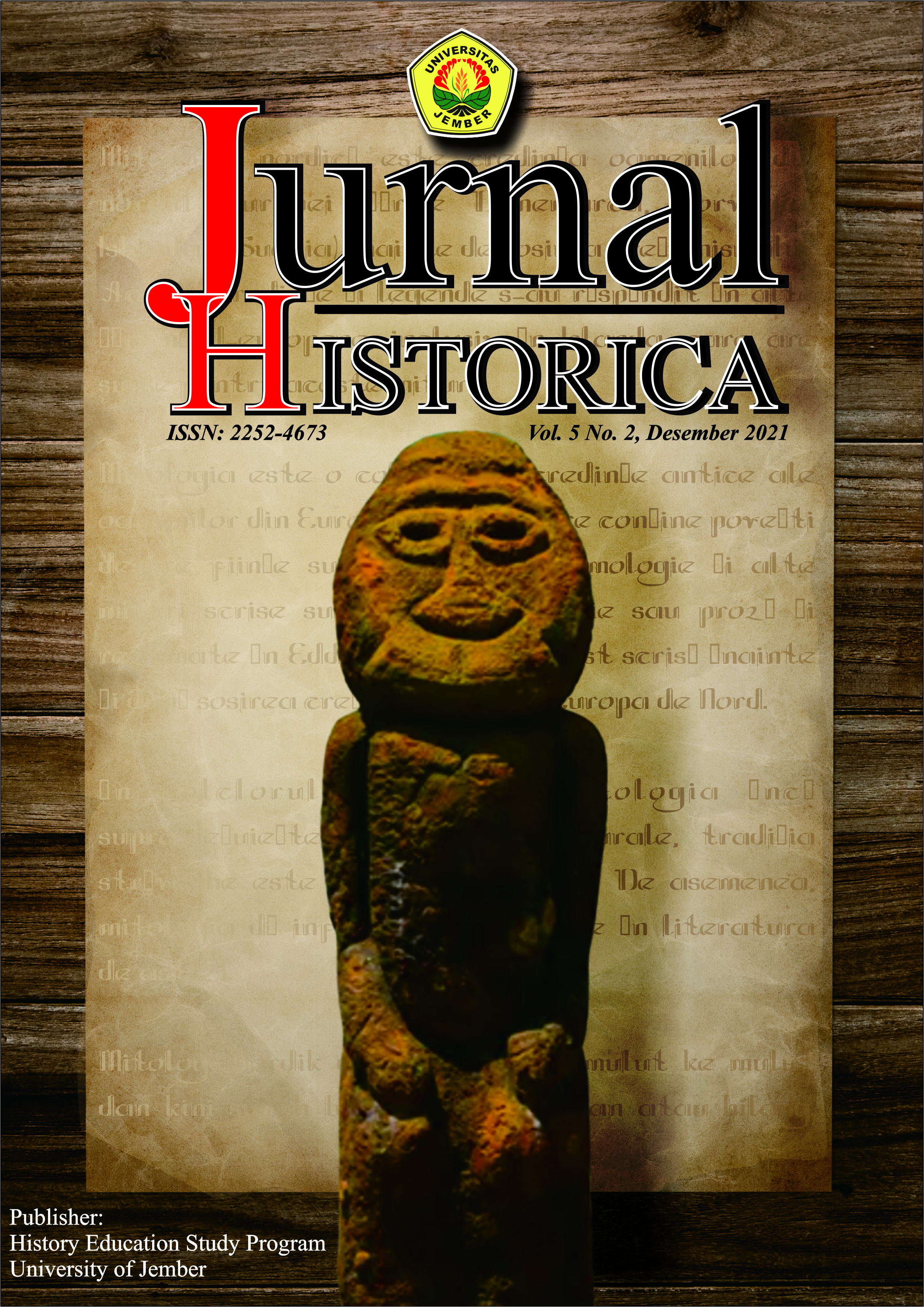The Green Revolution in Wuluhan Sub-district, Jember Regency 1969 - 1998
Abstract
This article examines the Green Revolution as one of the development programs in Indonesia during the New Order government. The scope of this article is that Wuluhan sub- district with high productivity in Jember Regency. The study is discusses 1) How was the New Order's political and economic policies that underlie the Green Revolution in Indonesia?; 2) How was the implementation of the Green Revolution in Wuluhan District, Jember Regency in 1969 - 1998?; 3) What is the impact of the implementation of the Green Revolution program on changes in production methods and productivity of agricultural products and the welfare of farmers in Wuluhan District, Jember Regency 1969-1998?. The method used in this research is the historical research method. using document sources, interviews, and supporting secondary sources. The result of this research is the New Order government's policy is based on the Trilogy of economic development. The form of the Green Revolution Policy in Indonesia is Bimas. The application of Panca Usaha as a program from Bimas can be accepted by wuluhan farmers even though there are several obstacles to the KUD, PPL institutions, and the use of agricultural materials such as pesticides. Production and productivity of rice plants has increased. The welfare of farmers can be improved, followed by improvements in the economy and other aspects of society in general



